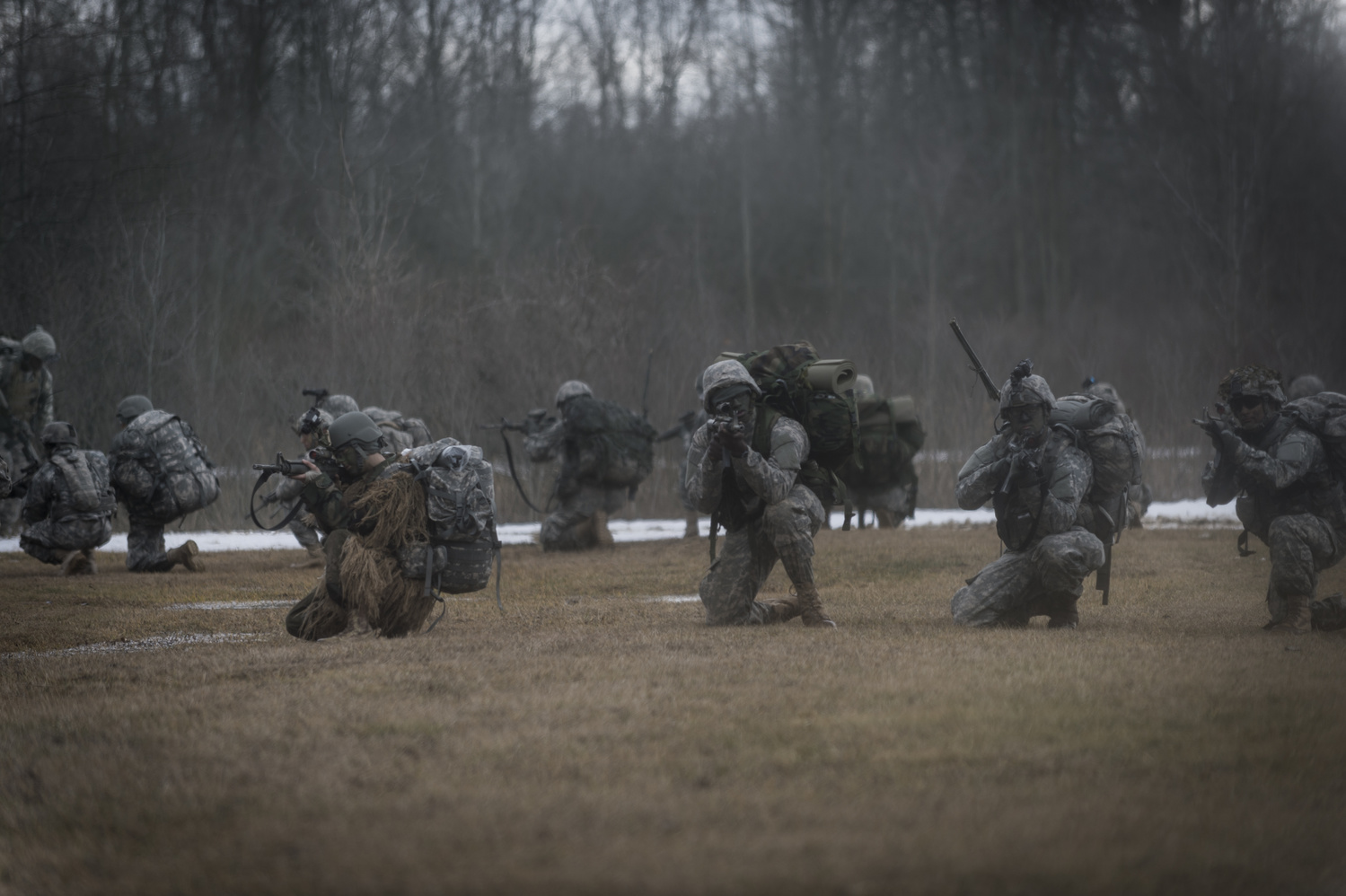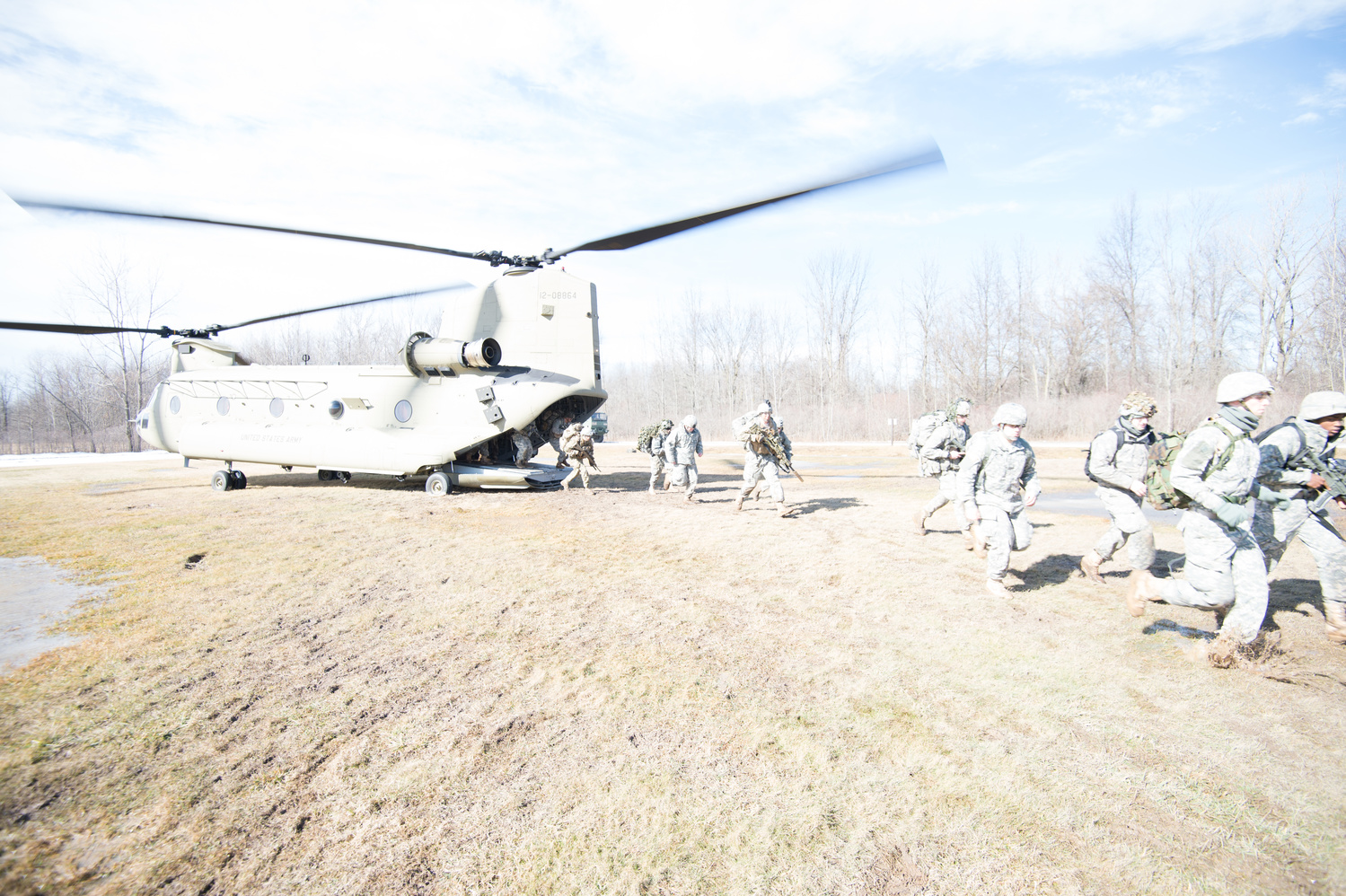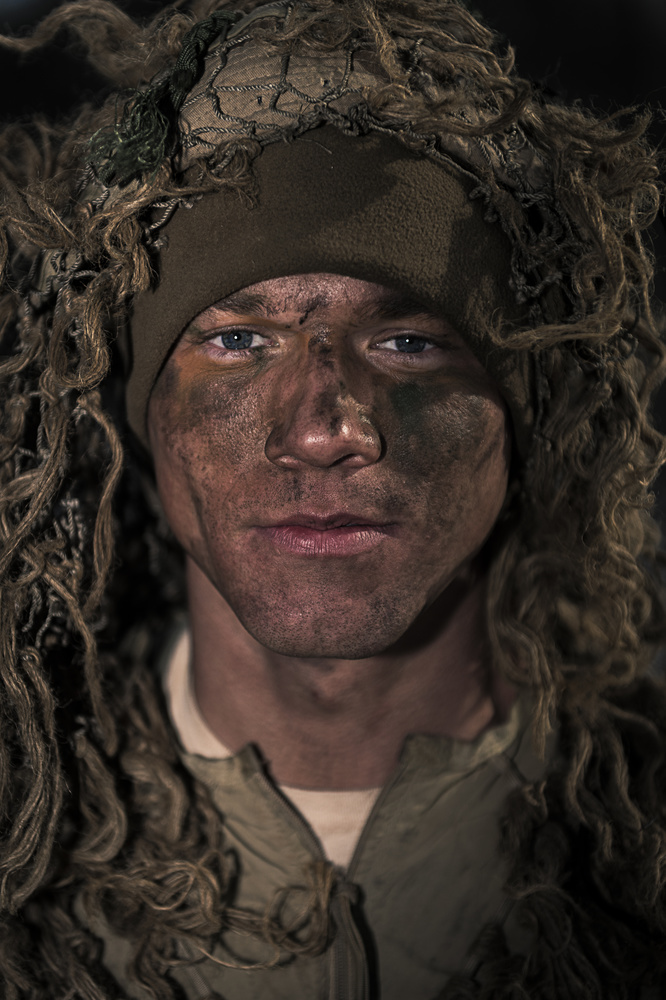Being a photojournalist in the U.S. Air Force, there are often some pretty interesting opportunities to cover situations and events that most other photographers I know would probably never find themselves in. When new opportunities come up, there are usually two big questions to ask. One is, am I prepared for this? The other is, how do I even shoot this?
Photographers, either formally taught or self-taught, will have their own methods and techniques for taking any given photo. A certain level of familiarity is developed for particular styles and situations, but what happens when nothing is familiar? This is where vision and being table to ask yourself specific questions take over as the lead elements.
In some, the unfamiliar can lead to a level of panic that causes them to fail in their assignment. Others who may not fear the unfamiliar can get over confident and still fail in their assignment. Sometimes the failure can be not properly preparing and maybe not having a specific lens when you really need it. In other instances you can get so hyped up by the overall situation that you forget to photograph the details that give your situation depth and be relatable.
When opportunity comes, I always tell everyone to accept every assignment and learn from it. We are never done learning, so why not try? So when the Army came to my office looking for a photojournalist as the Army wasn't able to provide that kind of support in our area of New York, the answer was yes even before I knew the specifics. The proposal ended up being, "do you want to fly around in Chinooks with the cavalry?"
The obvious excitement hits, and I feel instantly ready to take on the task. However, common sense sits in and says that I'm not ready. Being able to tell myself that I am not ready is the first step to success in this situation.
So why am I not ready? Well, I've never flown around in Chinooks photographing whatever it is the cavalry is planning on doing with them. So that means I need information. Other than my equipment, information is my next valuable tool in this being a success. Find a point of contact and ask them as many questions as you can come up with. As in journalism, I always look for the who, what, where, when, and why.
Know who you are photographing and what they are going to be doing, and that starts to frame what shots I'm going to need to plan on. Where and when they are going to be doing this will give me a sense of environment which will be a key element in those photos. The why will give me emotion. Maybe there are soldiers that have never done this type of training and I will get some struggle from them. Or maybe there will be that one experienced leader that brings a level of fearlessness to the photos.
I have my information, so what is my next step? I need to rely on my vision. You don't always know everything heading into a shoot. For this, I didn't know the environment that we were going to be going into. Were there going to be obstacles blocking my field of view? Will I always be able to have my eyes on my subject? Understanding that, I need to be flexible in what I expect from my photos.
This also sets up my planning in what I will take to the shoot. I know I want to be amongst the soldiers, so with my Nikon D4S, which I chose over my D800 for speed, I know I will need my Nikon 24-70mm f/2.8 lens. When I get into the Chinook I will definitely need more wide angle, so I need to also pack my Nikon 16-35mm f/4 VR. I also always take my Nikon 70-200mm f/2.8 VR as it has been my usual go-to and allow me to get some distance between myself and my subject, and capture the environment around them and get the overall view.
Next big question is what sets the scene? I want to see soldiers being soldiers. I want to establish that this is the Army, these are guys in full field gear, camouflage paint on their faces, and they are treating this as a real-world situation.
Soldiers are not always going be standing rigid and at attention. Once they get out into the field, doing what they are trained to do, they get into their own element and reveal their traits and emotion. Using a 70-200mm allows me to stay far enough away from them that I'm not intruding and causing their reaction to me to influence the photos that I get. One big realization that every photographer will come across is that people will act how they think you want them to be when they see a camera pointed at them.
It is always interesting to see what you get when you just simply stand back with a long lens and watch. Will someone put a hand in their pocket even though they are not supposed to? Probably, but in a moment like that you can get intensity. Intensity from them watching and waiting for the first Chinook to show up and the action to start.
Where do I want this to lead to next? When a Chinook shows up, they are probably going to make a run for it. Time is of the essence, getting everyone where they need to be as quickly as they can is key to their success. Soldiers will be running with their weapons and under heavy load to a massive helicopter with blades spinning furiously pushing a torrent of wind back at them. I know I need to get that photo.
Being able to see how the environment can contribute to a photo will always help add some visual appeal. Parts of the ground are flooded, there is snow and branches of bare trees and bushes to run through, mist and dirt is being blown towards me; this is a messy photo. This isn't just an infantry squad running to a helicopter, they are working their way to that helicopter. Incorporating the ugliness shows what that moment was like, rather than me standing back with a 600mm lens staying away from the dirt and debris.
Also, I want to convey motion. What would be the best way? I could try panning as the soldiers are running, but I only have so many opportunities so I should probably get it relatively right the first time. But then again, wouldn't motion in the Chinook be better? Freezing the motion to where the blades of the helicopter are frozen might lead you to think that it is not running at all. We have all seen someone running, but let's get up close with the twin blades of a Chinook running.
Slowing my shutter to 1/60s and increasing my aperture to f/11 gets me the Chinook fully in focus with motion blur in the blades and a bit in the soldiers running. The point of view was also important. You want action to move across a frame. Pushing it too far to the edge of the frame gradually takes away from the sense of motion.
What are infantrymen going to do when they get to the objective? Probably point their weapons at it. I know from past experience that it can be pretty difficult to get photo of such a thing with the weapons pointed at me due to safety measures, even if there is no ammunition involved in the training, such as was the case here. I know where the soldiers will be going, so I'm going to take a look from a distance with my 70-200mm and see what happens.
Showing the expanse that these soldiers have to cover and how far out they have to observe for threats, I know I need to get low for this photo. Getting low and shooting wide at an aperture such as f/2.8 will fill your foreground with the ground, but the bokeh will put it nicely out of focus, and the fact that you're low gives you the perspective of distance. As it turns out, I was in their imaginary field of fire.
Though the action on the ground is only one of the distinct elements of this shoot. I also need to give attention to what goes on in the Chinook as the cavalry flies to their objective. I'm going to be in a helicopter which I know is going to be wide angle stuff. That is all I'm going to plan on, as I realistically probably won't have the time to be switching lenses or over thinking my photos. Leaving my camera bag behind and keeping it simple is the only option I have here.
Getting into the Chinook and sitting with these guys reinforces the fact that there is a trap you can fall into here. Hearing that I'm going to be flying around in helicopters all day can easily divert my attention to just that. It would become too easy to focus all of my efforts on just photographing pure action, and fill my memory cards with photos of the Chinooks flying and doing their banking maneuvers, and getting endless shots of the ground below from the viewpoint of the open hatch at the rear of the air craft.
Is that what this training is about though? Going into it, you have to see that it isn't. At the heart of it, is people. They are trying to perfect skills that might quite literally mean the difference between life and death. People that have personalities and emotions. They struggle and show relief and rejoice at the sense of accomplishment. Is the Army something that is totally robotic? It can seem that way sometimes when you hear about daring raids and operations.
It is people though that make it all possible. People that sit on the uncomfortable seats of a Chinook, waiting to land, waiting to assault. Their faces are just as important of photos as are the photos of helicopters flying in and out of landing zones.
As always though, mistakes happen. Running off a Chinook after the one flight I was going to be able to be on that day, a quick glance showed me disaster.
I usually always shoot with my camera in manual. While in the air, my ISO was at a minimum of 1,600. Once we landed, I remembered to turn my ISO back down to 100, but left my shutter speed at 1/200s. Mixed with the aperture being at f/4 on a bright time of day, several photos ended up horribly overexposed. These were key photos that I wanted, and this was the only chance I had to get them.
Though when you're in the action, you don't stop. You keep going and you keep running until you get to your objective. I figured that I'll save these photos. I have to try at least, I have no choice. Thankfully the raw file was able to retain enough information that I could salvage a photo, though it still wasn't perfect. The sky ended more saturated than it should be, but any changes to its luminance or saturation would also affect the clouds. In any case, looking at it from a photojournalism aspect, the photos don't need to be perfect.


In the end, fine art wasn't the goal. It was all about documenting and capturing moments. If some of the photos turned out imperfect, so be it.
With all the big training goals accomplished, everyone starts to relax. One final element I knew I wanted was the close-up portrait.
Going over to that sniper who is wearing his ghillie suit and has his face covered in camouflage is an irresistible subject. Other photojournalists I've seen in action make the mistake of not owning the shoot. You can't exactly go up to one of your subjects and simply ask if they can stand over here, do this, and let you get a portrait. Too often the subject will back out and not want to to cooperate or want to give you something entirely different, while other times your lack of confidence will show in the photo.
That is why I tell people to own their shoots. Tell your subject what you need, it is more so you are directing them rather than asking their permission. Portraits can reinforce the human element of the situation, and give your viewer the chance to make more of a personal connection. One thing I like to do is take advantage of HSS with my SB-910 to really isolate just the face and not see much else. Even though the afternoon ended up rather sunny, I was able to shoot at 1/8,000s with ISO 125. Switching to the 24-70mm, which I found to be sharper than the older first version 70-200mm VR I had at the time, I could get up close and really fill the frame nicely.
In the end, as luck would have it, it was the salvaged overexposed photo that made the rounds throughout the Department of Defense as the lead photo for the written story that accompanied the photos. It made it in magazines without anyone ever knowing how close it was to never seeing the light of day. That gave me one of my biggest lessons, which is to not force perfection on everything you shoot. A moment is more than capable of speaking for itself.














oh hell ya. if you are busy next time give them my name. i photographed some stuff while i was in the navy in the late 80's and had a couple help rides. very cool stuff. but that was in the film days. gotta get it right the first time. i shot with a Nikon F3hp in those days.
I personally really like the F series cameras. I still shoot film as a personal hobby, and I've been trying to collect all the F cameras. The F6 may stay out of reach for a while, it is unreal how the prices of those are still staying so high.
I remember back in 1983 while stationed at Rhein-Main AB, I was out with my first trainer, MSgt Don Sutherland. I shot a bunch of C-130 imagery, in the air and on the ground using Ektachrome 200. After I processed the film, brought it out to the light table and had everything ripped to shreds by Doc, TSgt Rod Prouty, TSgt Charlie Diggs, and the unit CC, Major Chris Wells. Seems they didn't teach me in college that when shooting any aircraft with props, either fixed wing or rotary, you NEVER shoot above 1/125. When you do, you stop the props. Thousands of rolls of film and digital images later, it was a lesson I never forgot. It was a lesson I passed on to all my troops through the years. I retired in 05 after 24 years of shooting imagery all over the world for the Air Force. I had the SEI, spent over 3 years deployed into the sandbox supervising US and multi-national shooters. Guess I'm just a bit dated. I loved the last image, the close up of the grimy troop. Remember, Overalls, Mediums, Close ups. When you think you're close enough, move closer.
Mark Bucher, MSgt, USAF (ret)
Definitely a lot of small lessons that only take once to learn. Sometimes it is stuff you wouldn't have normally thought of. You can only learn so much in school, but at least with digital we can experiment on the spot and figure out what works. Or at least try. Next time I want to try a portrait with my macro lens, see just how close I can get.
Thanks for sharing!
always nice to read and see fellow photojournalists in the same field as you do and learn from each other's experience.
Ryan, check this out (military training photo album)
https://www.facebook.com/media/set/?set=a.10152672866873079.1073741863.7...
Thanks, great imagery and quite a different view on things than I'm used to seeing. The compositions and colors really stand out to me.